Discover 11 hidden attractions, cool sights, and unusual things to do in Gyeongju (South Korea). Don't miss out on these must-see attractions: Gyeongju National Museum, Dabotap, and Gyeongju World. Also, be sure to include Anapji Pond in your itinerary.
Below, you can find the list of the most amazing places you should visit in Gyeongju (Gyeongsangbuk-do).
Table of Contents
Gyeongju National Museum
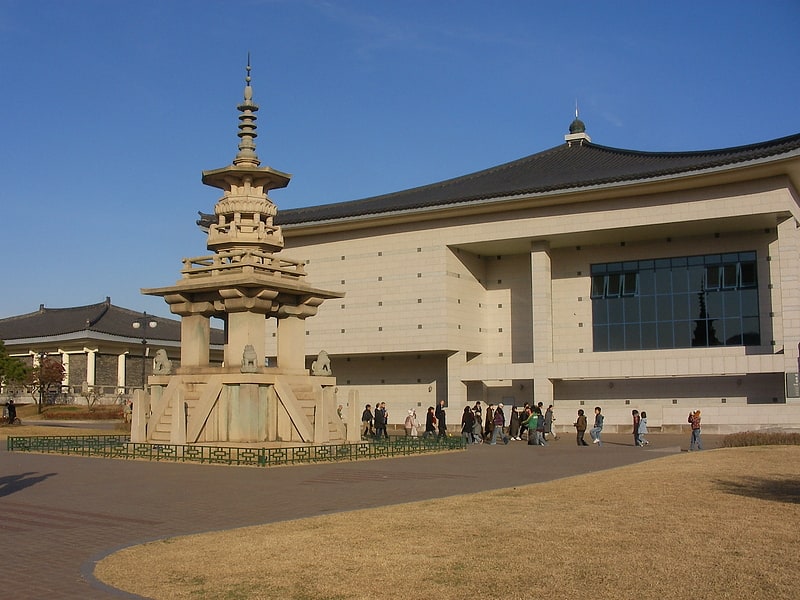
Also known as: 국립경주박물관
Exhibits on Gyeongju's royal heritage. The Gyeongju National Museum is a museum in Gyeongju, North Gyeongsang Province, South Korea. Its holdings are largely devoted to relics of the Silla kingdom, of which Gyeongju was the capital.
The museum is located immediately adjacent to the royal tomb complex, in an area which also includes the Gyerim forest, Cheomseongdae observatory, Banwolseong palace, and Anapji Pond.[1]
Address: 186 Iljeong-ro, Inwang-dong, 780-150 Gyeongju
Dabotap
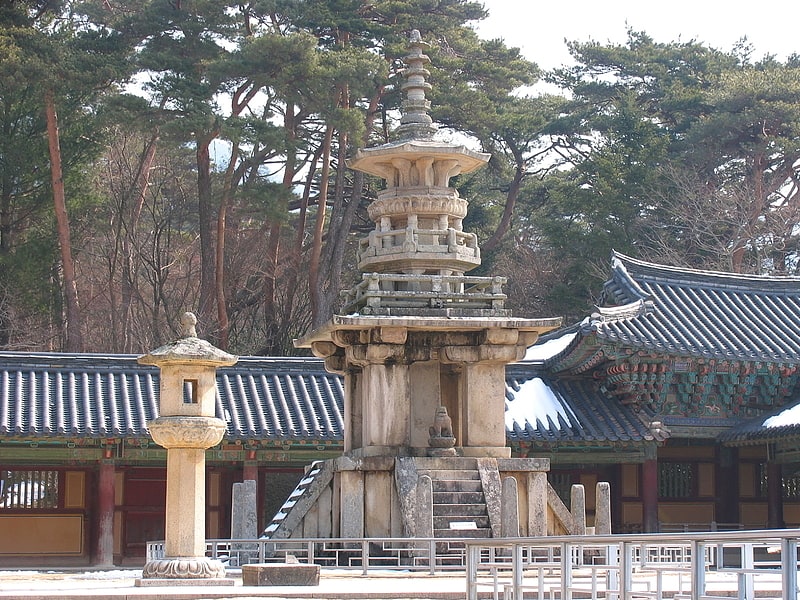
Also known as: 경주 불국사 다보탑
This refers to a pagoda containing the relics of Dabo Yeorae.
Dabo Pagoda, also known as pagoda of many treasures, is located in the temple of Bulguksa in Gyeongju, South Korea. From entering the temple through the Cheongun and Baegun Bridge, Dabotap is located on the right side, opposing Seokgatap on the left side. The pagoda is supposed to have been built in 751, the 10th year of the Shilla king Gyeongdeok. It is currently designated as National Treasure no. 20.
The 3 story pagoda stands 10.29 metres tall and was built in an ornate style not seen in other Buddhist countries. The sculpture techniques used are unique for its time and include delicate features.
It has a staircase on each of the four sides. Four stone square pillars support the pagoda's first roof, where is built a square stone railing. Inside the railing is the body of the pagoda, and above it, standing on the second octagonal-shaped roof surrounded by an octagonal stone railing, are eight bamboo-shaped stone pillars support the octagonal-shaped lotus stone carved with sixteen petals. Above it eight stone pillars support the third octagonal-shaped roof. Of the four stone lions guarding the top of the staircases only one remain. A second one is located at the British Museum in London. As for the whereabouts of the other two, they are still unknown. The pagoda was dismantled by the Japanese in the 1920s but there is no evidence of any relics found in the pagoda.
The pagoda is currently depicted on the obverse of the 10 won coin.[2]
Gyeongju World
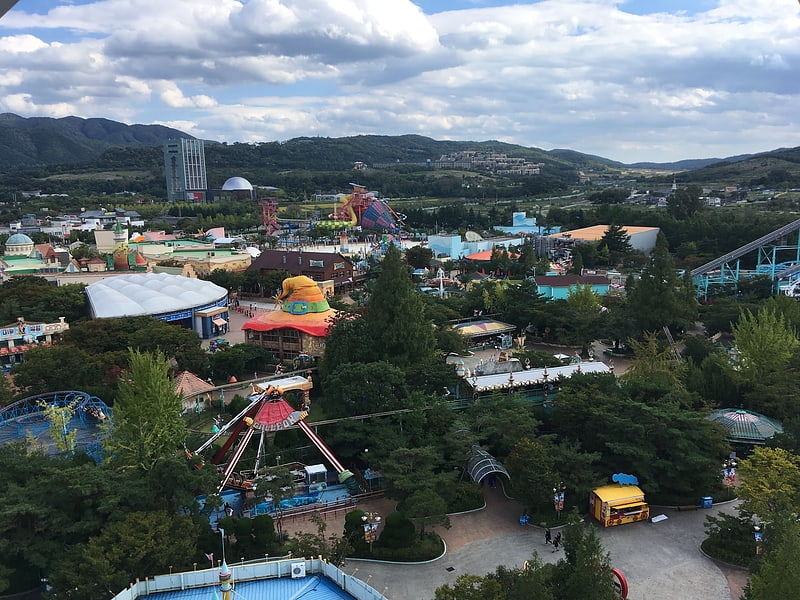
Also known as: 경주월드
Theme park in Gyeongju, South Korea. Gyeongju World is a theme park in Gyeongju, Gyeongsangbuk-do, South Korea. Gyeongju World is composed of 'X-zone', 'Snow sled garden', and 'Wizard Garden'. The 'X-zone' is composed of the Paethon, the Megadrop, the Tornado, and the Exploration of Grand Canyon. There are ski sleds, adult sleds, and children's sleighs in Snow sled garden. Wizard Garden is a children's termament with a wide variety of children's rides.[3]
Address: 544 Bomun-ro, 38117 Gyeongju
Anapji Pond
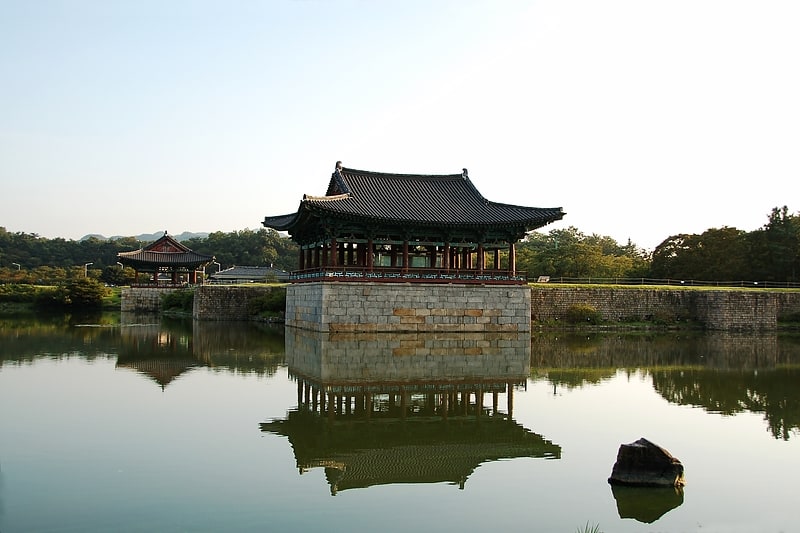
Also known as: 경주 동궁과 월지
Picturesque 7th-century pond and palace. Donggung Palace and Wolji Pond, formerly known as Anapji, is an artificial pond in Gyeongju National Park, South Korea. It was part of the palace complex of ancient Silla. It was constructed by order of King Munmu in 674 CE. The pond is situated at the northeast edge of the Banwolseong palace site, in central Gyeongju. It is an oval shape; 200m from east to west and 180m from north to south. It contains three small islands.[4]
Address: 원화로 102, 38163 경주시
Seokgatap

Also known as: 경주 불국사 삼층석탑
Historical landmark in Gyeongju, South Korea. Seokgatap is a stone pagoda in South Korea designated as the 21st National Treasure on December 12, 1962. Its full name is Sakyamuni Yeoraesangjuseolbeop Tap, and is sometimes referred to as the Shadowless Pagoda or the Bulguksa Samcheung Seoktap.
The pagoda stands 10.75 meters high, directly across from Dabotap within the Bulguksa Temple complex in Gyeongju, South Korea. It probably dates to around 751, when Bulguksa was completed.[5]
Bunhwangsa
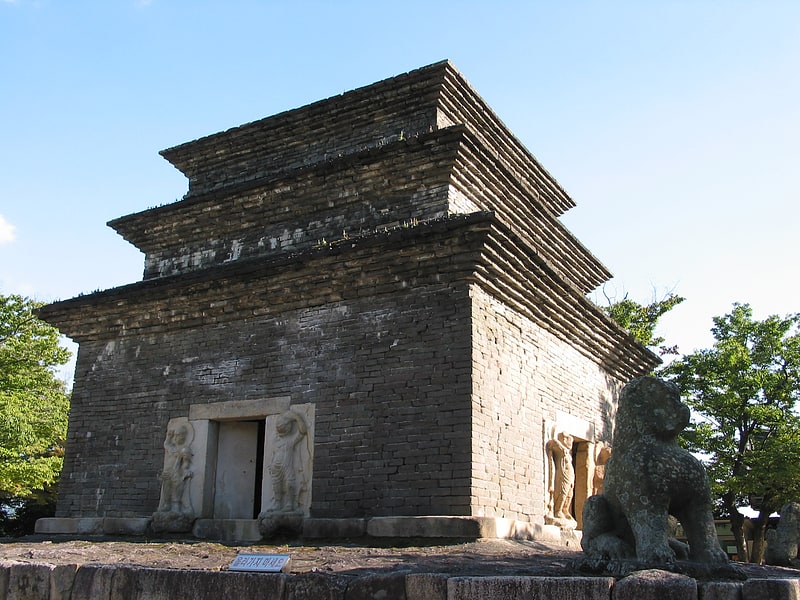
Also known as: 분황사
Buddhist temple in Gyeongju, South Korea. Bunhwangsa is a temple complex from the Old Silla era of Korea. It is located in Gyeongju. The temple is recorded to have been built in 634 under the auspices of Queen Seondeok. Today the temple is still used by a small group of worshipers but in its heyday, the temple covered several acres and was one of the four main temples of the Silla Kingdom used by the state to ask the Buddha to bless the kingdom. The ruins of Hwangnyongsa Temple lay nearby. It is part of the UNESCO world heritage site Gyeongju Historic Areas.[6]
Address: 321 Guhwang-dong, 780-110 Gyeongju
Girimsa
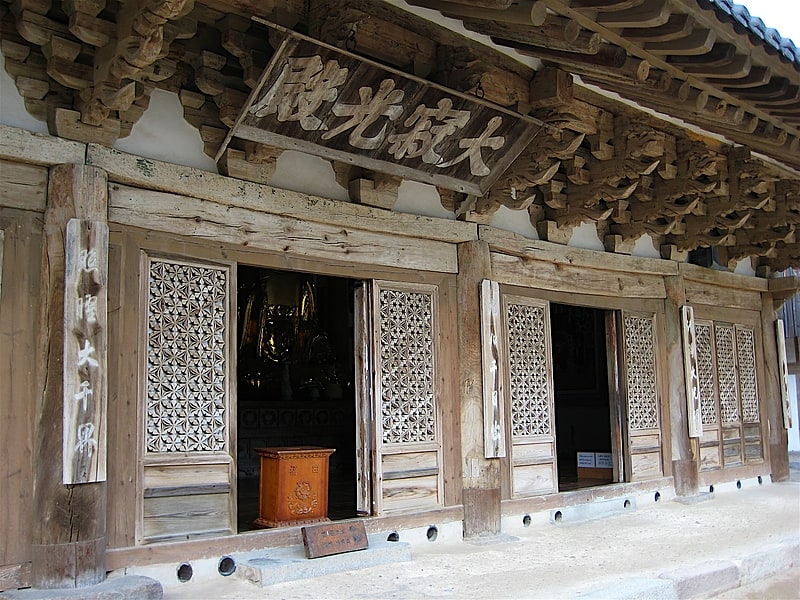
Also known as: 기림사
Buddhist temple in Gyeongju, South Korea. Girimsa is a Buddhist temple located on the slopes of Mount Hamwolsan in Gyeongju city, the North Gyeongsang Province, South Korea. It is a subsidiary temple of Bulguksa, the head temple of the 11th branch of Jogye Order. The temple was first established by Monk Gwangyu from India as Imjeongsa in 643, the period of Queen Seondeok's reign during the Silla kingdom period.
After monk Wonhyo rebuilt the temple, the temple's name was changed to Girimsa which name derives from "Girim jeongsa" (祈園精舍), meaning the forest where Buddha resided. Once it was the biggest temple in the Gyeongju area until the mid-1940s, even having Bulguksa as its branch temple. However, the situation has been changed - while Bulguksa has thrived onwards, Girimsa has not due to the accessibility. Yet, the temple consists of 16 buildings containing Daejeokgwangjeon hall (大寂光殿), Yaksajeon hall and Eungjinjeon hall and others. In addition to the buildings, Girimasa has relics such as Moktap Site, Three-Story Stone Pagoda and the lacquered Seated Mercy Bodhisattva of Girimsa Temple (Treasure No. 415).[7]
Seongdong Market

Market in Gyeongju, South Korea. Seongdong market is the largest traditional market in Gyeongju, North Gyeongsang province, South Korea. Located on the opposite side of Gyeongju station with an entrance on Wonhwa-ro, it provides crops, vegetables, fruits, and seafood produced in Gyeongju and nearby areas. There are also vendors that sell street food such as kimbap, sundae, and tteokbokki. An indoor area composed of ten or so restaurants offer fresh banchan as a buffet-style meal or à la carte. Seongdong Market was established in 1971. The market opens in the early morning.[8]
Address: 11, Wonhwa-ro 281beon-gil, 38146 Gyeongju
Cheomseongdae
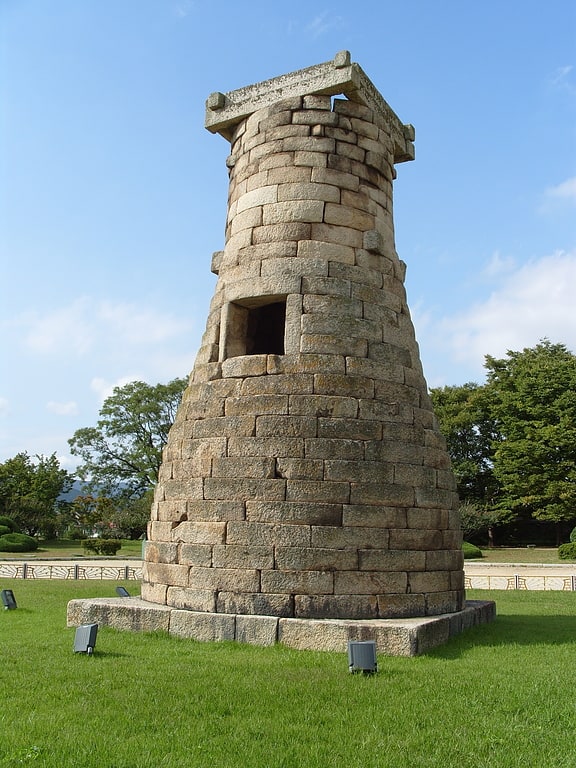
Also known as: 경주 첨성대
Observatory ruins dating from 632 A.D.. Cheomseongdae is an astronomical observatory in Gyeongju, South Korea. Cheomseongdae is the oldest surviving astronomical observatory in Asia, and possibly even the world. It was constructed in the 7th century in the kingdom of Silla, whose capital was Seorabeol, or present-day Gyeongju. Cheomseongdae was designated as the country's 31st national treasure on December 20, 1962.Modeled on Baekje's Jeomseongdae, which now exists only in historical records, the Cheomseongdae influenced the construction of the Japanese Senseidai observatory in 675, and Duke Zhou's observatory in China in 723.[9]
Banwolseong

Also known as: 경주 월성
Remnants of an ancient palace and fortress. Wolseong Palace Site, Gyeongju, also commonly known as Wolseong Palace, was the royal palace compound of the Korean Silla monarchy at their capital in Gyeongju during the Silla and Unified Silla periods. It takes its name from the approximate outline of the palace walls which were shaped like a crescent moon. Banwolseong has been also known as Sinwolseong or Jaeseong, which means where the king resides.[10]
Address: 387-1, Inwang-dong, 780-150 Gyeongju
Baengnyulsa
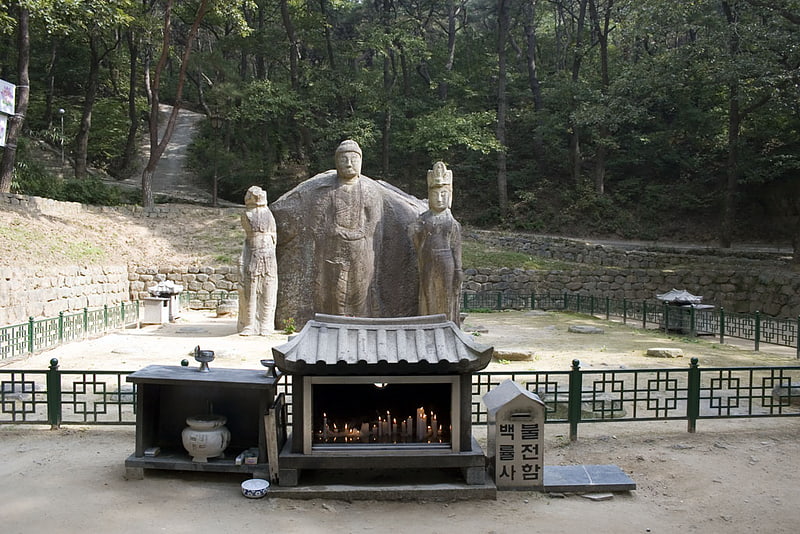
Buddhism in Gyeongju, South Korea. The Baengnyulsa or Baengnyul temple is a Korean Buddhist temple located on the slopes of Geumgang Mountain in the neighborhood of Dongcheon-dong, Gyeongju, North Gyeongsang province, South Korea. It is a branch temple of Bulguksa temple, the head temple of the 11th district of the Jogye Order. The foundation date is unknown but is speculated to be around the time when the Silla Kingdom united the Three Kingdoms of Korea in 692 according to both an oral story and a document on a Buddha statue. Baengnyulsa is also believed to be the Jachusa temple which is associated with Ichadon's martyrdom.[11]